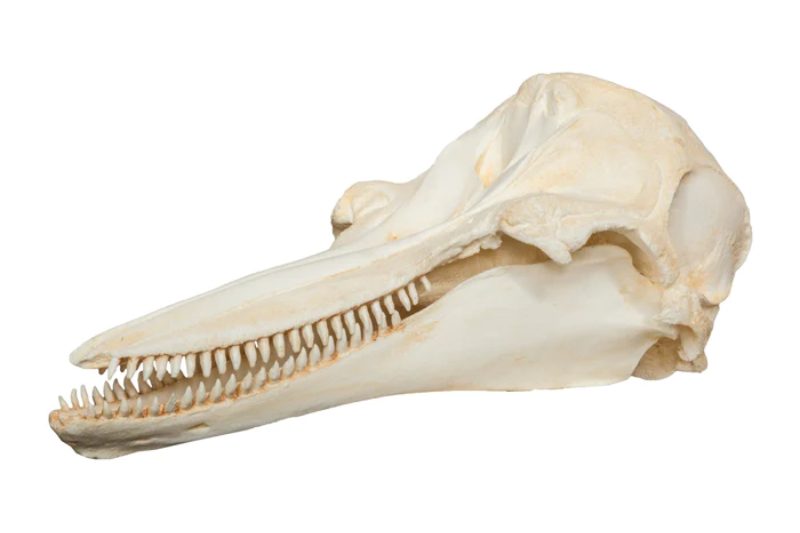The fossilized skull of a large river dolphin, which is believed to have escaped the ocean and sought safety in the Amazonian rivers of Peru sixteen million years ago, has been found by scientists. The largest river dolphin yet discovered, the extinct species could have reached a length of 3.5 meters.
According to the primary author of new research published in Science Advances today, the discovery of this new species, Pebanista yacuruna, emphasizes the impending threats to the surviving river dolphins worldwide, all of whom face identical chances of extinction in the next 20 to 40 years. According to Aldo Benites-Palomino, it belonged to the family Platanistoidea, which includes dolphins that are typically found in waters between 24 and 16 meters deep.
According to him, river dolphins that are still alive are ” “the remnants of what were once greatly diverse marine dolphin groups” and it is believed that they left the oceans in search of freshwater rivers where they could obtain fresh food.
“Rivers are the escape valve … for the ancient fossil we found, and it is the same for all river dolphins living today.”
A little boat is visible in the foreground as a youngster observes three guys working on a riverside.
While still an undergraduate, Benites-Palomino found the fossil in Peru in 2018. He claims that the pandemic caused a delay in the study article, and he is currently pursuing a doctorate at the University of Zurich’s paleontology department.
While out for a walk with a colleague, he noticed the fossil’s jaw fragment for the first time. “As soon as I recognised it, I saw the teeth sockets. I screamed, ‘this is a dolphin.’ We could not believe it.”
“Then we realised it was not related to the Amazon river pink dolphin,” he stated. “We [had] found an animal, a giant, whose closest living relative is 10,000km away in south-east Asia.”
The director of the paleontology department at Zurich University, Marcelo R. Sanchez-Villagra, called the discovery fascinating. “This is the first dolphin of its kind, but after two decades of work in South America, we had found several giant forms from the region,” the man stated.
Benites-Palomino noted that the fossil was unique in that it was unrelated to the river dolphins that currently swim in the same waters as the fossil. It was also notable for its size.
The impending threat of extinction affects all river dolphin species, including the closest extant relatives of the fossil, which are found swimming in the Ganges and Indus rivers. According to him, the main causes—urbanization, pollution, and mining—were already causing the Yangtze River dolphin to go extinct.
